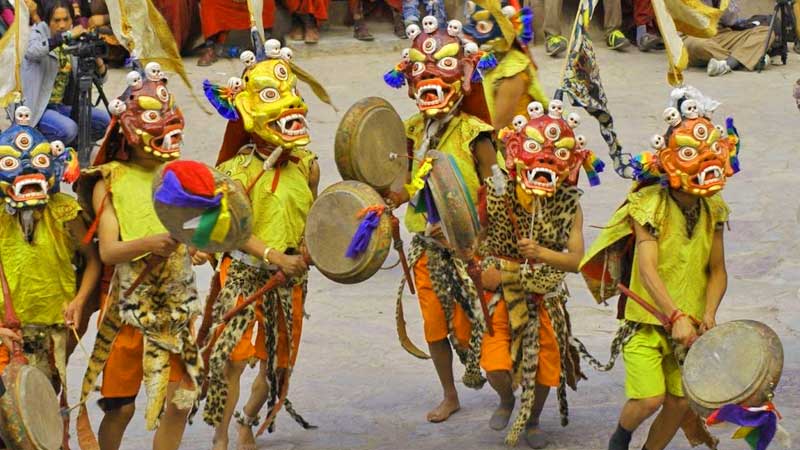
Sindhu Darshan Festival
20 Nights / 21 Days
Delhi - Leh - Kargil - Rangdum - Padum - Alchi - Leh - Likir Gompa - Dha Hanu - Basg - Leh - Hemis - Chumtahng - Karzok - Tsomoriri - Tsokar - Sarchu - Jispa - Manali - Amritsar - Delhi
Overview
Sindhu Darshan Festival
Tour Itinerary
Day 1 Arrive - Delhi
Begin Your tour
Arrive into Delhi.
Welcome to Vardhman's "Sindhu Darshan Festival"
On arrival at Delhi, you will be met and transferred by Vardhaman's representative to the hotel. Check in at hotel. Later, enjoy a sight seeing trip of Delhi visiting Humayun's Tomb, the Qutub Minar, the Red Fort and the great Jama Masjid - the biggest mosque in India.
Optional : Sound and Light Show / Dances of India
Humayun's Tomb: It was built by the emperor's grieving widow, Haji Begum, in 1565 AD. Constructed with red sandstone it marked the beginning of a new tradition of ornate style which culminated in the Taj Mahal of Agra. Designed by the Persian architect, Mirza Ghyas, Humayun's Tomb shows a marked shift from the Persian tradition of using coloured tiles for ornamentation. Located in the midst of a large square garden, screened by high walls, with gateways to the south and west, the tomb is a square tower surmounted by a magnificent marble dome, 140 feet from the base of the terrace and is topped with a copper pinnacle. The complex also houses remains of Humayun and the grave of many other distinguished members of the Mughal dynasty.
Qutub Minar: It is one of the tallest and famous towers in the world. 234 feet high and the highest individual tower in the world. It has a number of floors or storeys which has beautiful carvings . There are inscriptions all round the tower which reveal that Iltutmish finised the tower. The structure of the wall is made as such that it widens from top to bottom, just to make the minar stronger.
Red Fort: It is made up of red sandstone. Its walls have withstood the vagaries of time and nature. It rises above a wide dry moat in the northeast corner of the original city of Shahjahanabad. Its walls extend from two kilometers and vary in height from 18 metres on the river side to 33 metres on the city side.
Jama Masjid: It is the largest mosque in India, built between 1644 and 1658. It is one of the last architectural works of the Mughal emperor Shah Jahan. Its spacious courtyard holds thousands of devotees. Located on a mound in the heart of the old city , it projects beautifully into the Old-Delhi skyline. It was built in red sandstone and marble by more than 5000 artisans. It stands at the center of the erstwhile capital city of the Mughals, Shahjahanbad.
Overnight: Hotel
Day 2 Delhi - Leh Flight (01 Hr 15 Mins)
Morning after breakfast, transfer from city to domestic airport to connect flight to Leh .
Upon arrival in Leh welcome in traditional Ladakhi style and transfer to hotel, check in and rest of the day at leisure to acclimatize.
Overnight: Hotel
Day 3 Leh
After breakfast half day excursion to visit Phyang & Spituk Gompa. After the visit you will drive back to Leh. Also visit the Tibetan Refugee Camp & school.
Phyang: Situated on the Leh - Kargil Highway 24 kms. west of Leh, it has a gompa that belongs to the 15th Century built by king Tashi Namgyal, The gompa has tall walled building and houses 50 Prigungpa Lamas. The Dukhang has got 3 silver chortens out of which one has got seven eyed coloured Dezi stone which is believed to be highly auspicious and was brought from Tibet by a former Head Lama. Gonkhang enshrines a furious veiled protector Deoty and also has a great collection of weapons and armours used during the Mongolian invasion of 14th Century. Phyang is also well-known for its annual festival which is the second largest festival in Ladakh. Phyang Tsedup festival formely used to be held during the winters, but recently it has been rescheduled with the tourist season and is celebrated during the month of July - August. During that, there are Chaam dances and exposition of Giant 10 mtrs. broacade Thangka.
Spituk Monastery: It is located on a high hill overlooking the Indus river about 18 Km from Leh. The Spituk monastery has a wide collection of Buddhist artifacts and for the Spituk festival held from the 17th to 19th days of the 11th month of the Buddhist calendar. Further up the hill is a Mahakal Temple, where an image of Vajrabhairava is unveiled once a year at its annual festival.
Choglamsar: It is situated on the bank of Indus river. The new Tibetan refugee camp just off the main road from Leh is an important center for Tibetan Culture, History and Buddhism. Tibetan children village has library, Medical center, Traditional Handicraft shop and study center. Around one Km from TCV towards Hemis is the central Institute of Buddhist studies. It's the study center for Tibetan Buddhism and Ladakhi culture has Tibetan painting and sculpture school, library with good collection of books.
Overnight: Hotel
Day 4 Leh - Kargil
After breakfast, early morning drive to Kargil over two big passes on the way. Enroute stop to visit the Lamayuru Monastery & Mulbekh.
Arrive in Kargil by evening. On arrival, check into hotel.
LAMAYURU MONASTERY: The oldest and spectacularly set Lamayuru monastery is about 125 kms. West of Leh, founded in the 10th century in 11th century the Mahasiddha Naropa came to this place. Then Rinchen Zangpo translator came and built many temples and stupas and then teaching of the Kadampa school came to flourish. Later Jamyang Namgyal offered it to Chosje Danma and Digung Kargyut school were introduced and named Yungdrung Therpalling. The Yundrung Kabgyad festival is held on the 28th and 29th days of the 2nd Tibetan month.
KARGIL: Kargil, 204 kms from Srinagar in the west and 234 kms from Leh in the east, is the second largest urban centre of Ladakh and headquarters of the district of same name. It is also the take off station for visitors to the erotic Zanskar Valley. Tourists travelling between Srinagar and Leh have to make a night halt here before starting the second leg of their journey. Kargil mainly serves as an ideal base station for adventure activities like trekking, mountaineering, camping, river rafting etc. In high Himalayan Valleys. It is also a base for taking shorter excursions like :-
Mulbek Chamba: The chief attraction of Mulbek is a 9 m high rock sculpture in deep relief of Maitreya, the Future Buddha. Its excursion combines esoteric Shaivite symbolism with early Buddhist art.
Mulbek Gompa: Perched atop a rocky cliff, Mulbek Gompa (monastery) dominates the valley. It is easy to see why in bygone times this site served as an outpost to guard the caravan route.
Shergol: Another picturesque village of the Wakha River valley, The main attraction is a cave monastery which is visible from a far as a white speck against the vertically rising ochre hill from which it appears to hang out. Below this small monastery is a larger Buddhist nunnery with about a dozen incumbents.
Overnight: Hotel
Day 5 Kargil - Rangdum - Padum (By Road 11 hrs drive)
After an early breakfast commence drive 10 - 11 hrs through the Suru valley passing through numerous villages, The drive gives excellent view of the Twin peaks of Nun & Kun. Arrive at Rangdum in the afternoon to visit Monastery. After visit continue over the mighty Pensilass pass into Zanskar. The top of Pesi la pass offers excellent views of the snow covered peaks. Late evening arrival near Padum a place called Ating where we will set up our camp for the next three days & make excursions from here.
Padum: It is located on the top of a hill at the far end of the Lungnak valley. The majority of its inhabitants are Muslims who are engaged in trading. At its eastern border, a suspension bridge cross over the Tserap Lingti Chu. From there a path leads along its right bank, and further along the river Zanskar, towards Tonde and Zangla. To the southwest, slightly above Padum, lies the Monastery of Stagrimo, just 15 minutes away, which belongs to the Drukpa Kagyupa order and is presently the home of about 30 monks.
Nun Kun: It comprises a pair of Himalayan peaks: Nun, 7,135 m (23,409 ft) and its neighbour peak Kun, 7,077 m (23,218 ft). Nun is the highest peak in the part of the Himalayan range lying on the Indian side of the Line of Control in Jammu and Kashmir. The massif is located near the Suru valley, about 250 km east of Srinagar. Kun is located north of Nun and is separated from it by a snowy plateau of about 4 km in length.
Rangdum Valley: It is situated 3657 m above the sea level at the remotest and most isolated region the Suru valley. On one side, it has colorful hills while on the other are rocky mountains and glaciers. Loacted midway between Kargil and Padum (Zanskar), it offers a popular night stay for the trekkers to Padum. Panoramic surroundings make it a convenient and foremost choice for camping in the forests of Himalayas. As the sun sets, its beauty turns itself to the extreme with flame-colored hills wearing red snow tops as their crowns. An important trekking base, it offers 5-day trek Henaskut across the Kanji valley gorge, which is very popular along with shorter treks such as hike up the Penzila Ridge opposite the magnificent Drang-Drung glacier.
Suru valley: It is located at a height of 3,000 m. The towns of Kargil and Rangdum are located here. The Penzella Pass at Panikhar, a hill resort in Zanskar, divides the Suru valley with Zanskar. It is inhabited by 25,000 by people of Dard and Tibetan descent. The majority of the people are followers of Shi'a Islam. Buddhists in this valley are dispersed throughout the valley in small numbers but are found mainly in Rangdum.
Overnight: Camp
Day 6 Padum
This day after breakfast, visit the karcha Monastery in the morning, return to camp for a hotel lunch. In the afternoon visit Sani Gompa & rest time around Padum Market.
Return to camp in the evening.
Karcha Monastery: It's the largest of all monasteries in Zanskar. It was first established by Phagspa Shesrab, the translator of Zanskar. The Teacher Dorje Shesrab built the present monastery. More than 100 monks are in residence. There are shrines and the wall paintings executed by the Lama Dzadpa Dorje. Also, there are Bone relics of Dorje Rinchen . Every year on the 28th & 29th days of the 6th Tibetan month the sacred dance is observed in association with the Gustor festival. There are also two temples built by Rinchen Zangpo, one is Thugsjechhenpoi Lhakhang and the other is Lhakhang Karpo. Close by Karcha are the monasteries of Khagsar, of Purang in the village of Langmi, of Phagspa in the village of Nangbaphal and a nunnery called Dorjezong at the top of the valley.
Overnight: Camp
Day 7 Padum - Kargil (By Road 10 hrs drive)
Early morning after breakfast, drive to Kargil 10 hrs over the PENSILA PASS. En route visit the image of Maitriya Buddha near the Sanku village.
Arrive late in the evening and check in to hotel.
Overnight: Hotel
Day 8 Kargil - Alchi - Leh
Early morning after breakfast, drive to Leh en route visit the famous monastery of Alchi this is the unique monastery in Ladakh this very well known for its ancient paintings, it is also termed as the Ajanta of the Himalayas.
Arrive late in the evening at Leh. On arrival, check into hotel.
Alchi: It is located around 67 km from Leh has one of the oldest monasteries in Ladakh region. Alchi Monastery stands on the banks of river Indus. Though traditionally, the oldest monuments preserved here date back to the middle of the 12th century. It is the only monastery built on a flat ground.
Its complex has two main temples - Alchi Du-khang and the Sum-tsek. Apart from these, there are Temple of Manjushri, Lotsawa Lha-khang, Lha-khang Soma and 3 Ka-ka-ni (entrance) chortens. It is managed by monks of Likir Monastery. For tourists, it is essential to carry a flashlight since there is no electricty inside and photography is prohibited inside.
Overnight: Hotel
Day 9 Leh - Likir Gompa - Dha Hanu
After breakfast drive to Dha hanu enroute visit at Likir Gompa, The magnificent gompa at Likir, known as the Klu-kkhyol Gompa, was founded in the 14th century, and was the first in Ladakh known to have been built under the direction of Tibetan monks.
After visit continue to Dha hanu. On arrival, check into camp.
Dha Hanu: It has a small number of villages along the road leading north-west from Khalsi. The steep bare walls of the Indus give the terraced fields more light and heat than other pats of Ladakh. The area is probably most famous for its inhabitants, known as dards or Brokpas, "people of the land ", an ancient Indo- Iranian people but retain their own Buddhist and beliefs.
Likir gompa: Established in the 15th century , it is set on an isolated ridge a few kilometers north of Saspol. The road approaching the gompa makes a wide semi-circle around its base. Likir belongs to the yellow-hat sect of Buddhism and houses about 120 lamas. The head lama, the younger brother of the Dalai Lama, has married (against the rule of the sect) and is permanently absent from the gompa. The school has thirty pupils who learn three languages besides Ladakhi, Hindi and English, as these are the national languages of India, and Tibetan for religious purposes. Climb up to Likir's central courtyard and immediately on the right is the main Dukhang or main assembly hall.
Overnight: Camp
Day 11 Dha Hanu - Basgo - Leh
After breakfast return back to Leh enroute visit at Basgo.
After visit continue to Leh. On arrival, check into hotel.
Basgo: It was the capital of lower Ladakh kingdom was united at Leh. Listed as one of the top 100 endangered world heritage sites in 2000, the 400 - year old mud- brick gompa is up winding, steep tracks. The prayer room in the Set zung Temple has great frescoes; another temple has an enoromus gold & copper statue of the Maitreya Buddha ( Future Buddha ).
Overnight: Hotel
Day 12 Leh - Hemis - Chumtahng - Karzok - Tsomoriri
Drive to Hemis Gompa after breakfast, around 45 km from Leh for a short visit. Late evening return the camp.
Hemis Gompa: Situated 45 km from Leh, it belongs to the Drukpa Lineage, located in Hemis. It was established in 1672 by Ladakhi king Senge Namgyal. The annual Hemis festival honoring Padmasambhava is held here in early June. Hemis Gompa is also known as Chang-Chub-Sam-Ling (or the Lone Place of the Compassionate Person. It is one of the most accessible, famous and therefore most visited gompas.
Overnight: Camp
Day 13 Karzok
After breakfast, enjoy the KARZOK GUSTOR FESTIVAL during the day. This is a very colourful and famous festival of Ladakh.
Overnight: Camp
Day 14 Karzok
After breakfast, enjoy the FESTIVAL in the morning. In the afternoon visit Thikse Monastery . There is a small gompa . A collection of solid brick huts set up for the dramatic winters.
Thiksey Gompa: It is situated at a distance of approximately 18 km from the town of Leh and belongs to the Gelukpa Order of Buddhism. Sherab Zangpo of Stod got the Thikse Monastery built for the first time, at Stakmo. However, later Spon Paldan Sherab, the nephew of Sherab Zangpo, reconstructed the monastery in the year 1430 AD. The new monastery was sited on a hilltop, to the north of Indus River.It has a temple, known as Lakhang Nyerma, built by Rinchen Zangpo, the Translator, dedicated to Goddess Dorje Chenmo. A huge temple in its time, today it stands mostly in ruins. Also there are a number of other sacred shrines inside the monastery complex. The monastery also has a rich collection of numerous valuable artifacts and ancient relics.
Overnight: Camp
Day 15 Karzok - Tsokar (By Road 85 km in 5 hrs drive)
After a leisurely breakfast drive to Tsokar.
Tsokar:- This is a beautiful valley with yaks and nomads. The journey to this place is through rugged roads but the destination is really beautiful. Enjoy the lakes and scenes and relax in the camp while our people take care of you. Have the dinner.
Overnight: Camp
Day 16 Tsokar - Sarchu (By Road 118 km in 5 hrs drive)
After breakfast drive to Pang. This will be 60 km down hill drive first and then you will need to cross PANG.
Overnight: Camp
Day 17 Sarchu - Jispa (By Road 142 km in 5 hrs drive)
Enjoy your breakfast at the camp and drive to Jispa. The drive is very beautiful as the vegetation and the mountains slowly change colours.
Overnight: Camp
Day 18 Jispa - Manali (By Road 117 km in 5 hrs drive)
Drive to Keylong after breakfast and visit the KHARDUNG MONASTERY - the most celebrated monastery of Lahaul.
Reach Manali in the late afternoon. Check in to hotel. Spend time at the local markets.
Khardung La: It is known as the world’s highest motorable mountain pass. Individuals with their own GPS equipment have, apparently, measured less than the official 18,380 ft that is proudly stated on top of Khardung La, but this does not matter to most bikers who dream about driving their motorbike to the top of the world. Khardung La, 26 miles outside Ladakh’s capital Leh, is to many bikers the ultimate goal after the tough and challenging trip from Manali to Leh.
Overnight: Hotel
Day 19 Manali
After breakfast, proceed for a Full Day excursion of the hill queen. Return to the hotel or explore the local markets.
Hadimba Temple: This beautiful temple is dedicated to goddess Hadimba – the wife of Bhim of Mahabharat fame. It has four-tiered Pagoda shaped roof and the doorway is carved with legendary figures and symbols. It is a pleasant experience to stroll in the complex built in 1533 A.D.
Manu Temple: It is just 3 km away from the main bazaar in Old Manali and dedicated to Manu Rishi. It is believed that this is the only temple of Manu in India, who was the creator of human race on the earth.
Club House: It is situated 2 km from the town. It has indoor game facilities. There are also some picturesque picnic spots in surroundings.
Manali Mountaineering Institute: It offers basic and advance training courses in trekking, mountaineering, skiing, and water sports.
Tibetan Monasteries: There are 3 newly constructed colorful monasteries, where visitors can buy carpets and other Tibetan handicrafts. Two are in the town and one at Aloe on the left bank of Beas River.
Vashisth Hot Water Spring & Temple: It situated 3 km from Manali. It is known for hot water spring and stone temple – dedicated to Vashisth Muni.
Nehru Kund: It is situated at the distance of 5 km from Manali on National Highway leading to Leh. It is a natural spring of cold clear water named after Pd. Jawahar Lal Nehru. It is believed that the spring is originated from the Bhrigu Lake situated high-up in the mountains.
Solang Valley: Situated 13 km away from Manali, it is a splendid valley between Solang village and Beas Kund. It offers spectacular view of the glaciers and snow-capped mountain peaks. It is famous for fine ski slopes.
Kothi: It is situated 12 kms away from Manali on the road to Rohtang Pass. It is an ideal spot for nature lovers, poets, writers and lovers of peaceful environment.
Rahala Water Falls: It is situated at distance of 16 km away from Manali on way to Rohtang Pass. It is an ideal spot for picnic.
Arjun Cave: It is situated 4 km from Manali toward Naggar. Arjun has meditated here.
Jagatsukh: It is 6 km away from Manali located on the left Bank of the River Beas on the road to Naggar. The place is famous for very old temples.
Overnight: Hotel
Day 20 Manali - Amritsar (By Road 250 km in 5 hrs drive )
After breakfast, drive to Amritsar. Arrival and check in to hotel. During the day visit the GOLDEN TEMPLE. This is one of the best maintained shrines in India and would take a bit of time visiting the place and taking a round of the pious lake.
In the evening enjoy the Punjabi Cuisine and roam in the old market of the city.
Golden Temple: It is also known as Sri Darbar Sahib or Sri Harmandir Sahib. It's the most sacred temple for Sikhs. It propagates Sikhism's message of tolerance and acceptance through its architecture that has incorporated symbols from other religions. The Sikhs all over the world, wish to visit and pay obeisance at Sri Harmandir Sahib in their Ardas.
Overnight: Hotel
Day 21 Amritsar - Delhi (By Train 6 hr)
This morning after breakfast, visit the INDIA PAKISTAN BORDER for a dress parade. (GATE OPENING CEREMONY).
In the late afternoon take train to Delhi.
Arrive delhi and transfer straight to Airport to board the flight for your onward journey with sweet and unforgettable memories of "Sindhu Darshan Festival" escorted by Vardhman Vacations.
END OF OUR SERVICES
Make Your Trip Now
Get More Packages
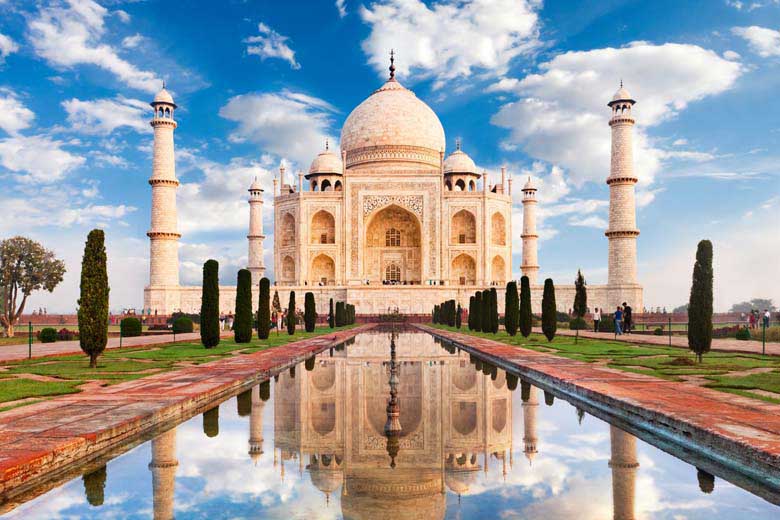
Golden Triangle Vacation Tour
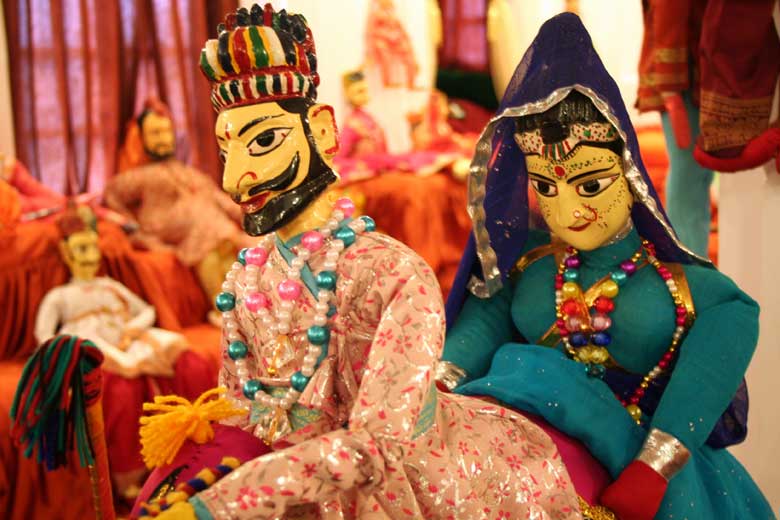
Rajasthan colorful Tour
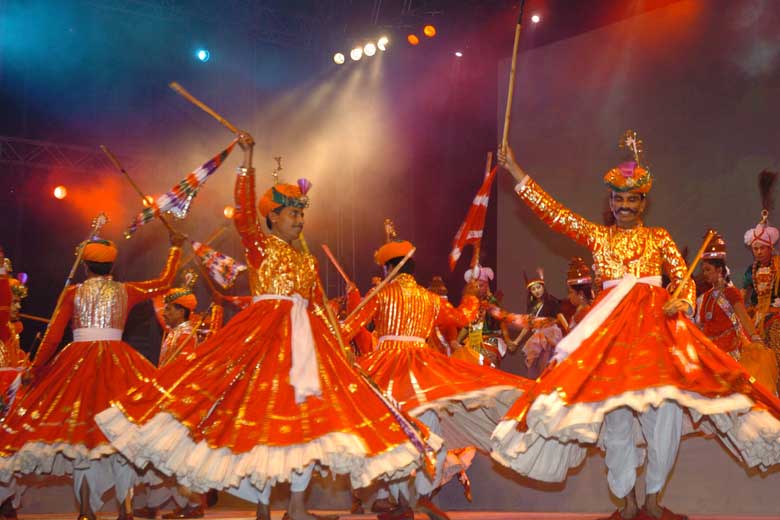
Rajasthan Cultural Tour
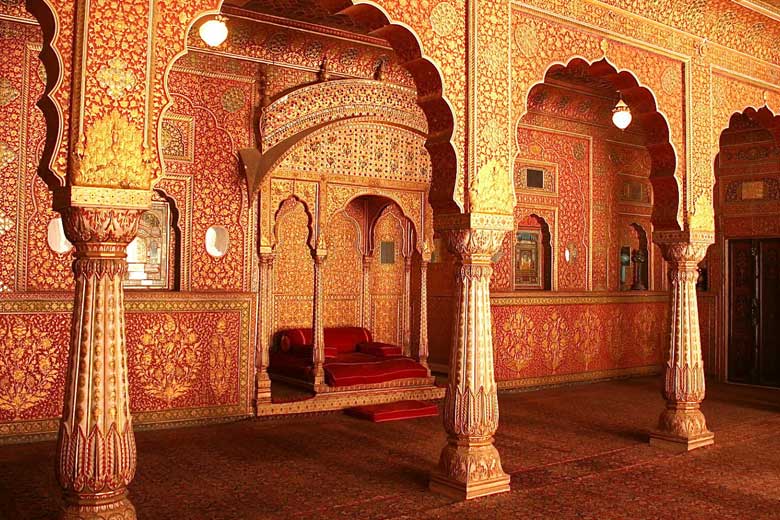
Rajasthan Fort & Palace Tour
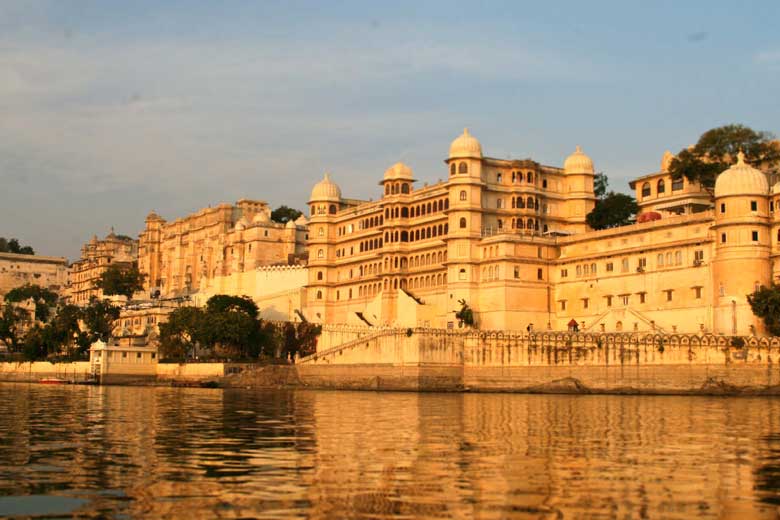
Rajasthan Heritage Tour
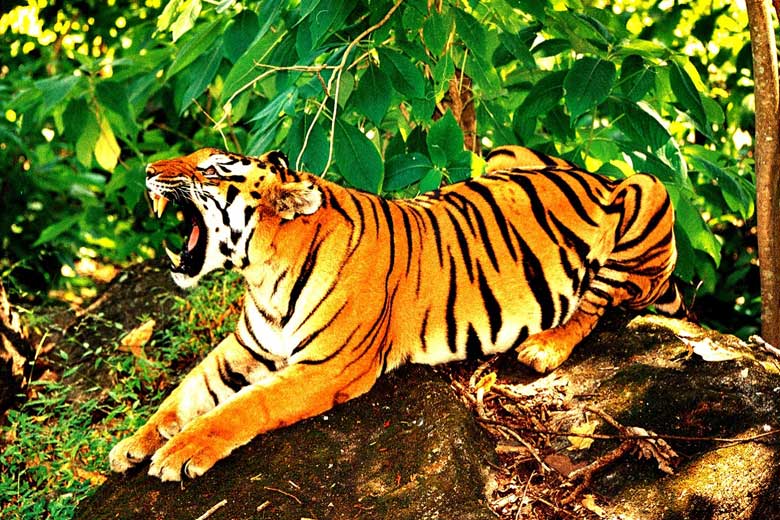
Rajasthan Wildlife Tour
MOST POPULAR PACKAGES

6 Nights / 7 Days
Golden Triangle Vacation Tour
India’s golden triangle is a tourist circuit which includes: Delhi, Agra (including the Taj Mahal), and Jaipur. These trips usually 7 days and do the trip as a circuit starting and ending in Delhi.
View Package
16 Nights / 17 Days
Rajasthan colorful Tour
Coloruful Rajasthan Tour is one of the most popular circuit of India. This tour package accommodates you to endure Rajasthan in all its different colors.
View Package
10 Nights / 11 Days
Rajasthan Cultural Tour
The Rajasthan state represents an unusual diversity in all its forms - people, culture, customs, costumes, cuisine, dialects and music and haveli's.
View Package
12 Nights / 13 Days
Rajasthan Fort & Palace Tour
Rajasthan is famous all over the world for its stunning forts and palaces that have been gloriously standing since decades in this princely state.
View Package
11 Nights / 12 Days
Rajasthan Heritage Tour
Rajasthan known as the "land of kings"provides some marvelous marks from the history in the form of its forts, palaces, mansions and haveli's.
View Package
06 Nights / 07 Days
Rajasthan Wildlife Tour
The name Rajasthan has a habit of invoking the images of sun-bathed sand dunes of the Thar Desert, the rustic turban and mustache of Rajasthani men and women’s ghagra.
View Package
 Gujarat Toursim
Gujarat Toursim IATO - Indian Association of Tour Operators
IATO - Indian Association of Tour Operators +91-9811175768
+91-9811175768



